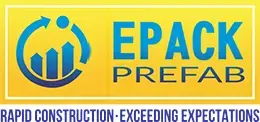Every year, to remind the world that our natural resources are limited and its important to be responsible for them, we celebrate “Nature Conservation Day” on June 28.
Earth has 8 billion people, and this number will exceed 9 billion by 2037. This is particularly threatening because it also means that clean air, soil, minerals, fuels, water, and other essential natural resources will deplete exponentially. Measures to conserve the resources and keep them clean are not up to par with this change.
Thankfully, the construction industry can drastically improve the situation by introducing prefabrication and pre engineered buildings into the mainstream.
This technology, if implemented rightfully, can seamlessly align with the goal of nature conservation while also supporting urbanisation.
What do we mean by prefabrication and PEB buildings? How can it support sustainability initiatives? Let’s find out!
#1 Sustainable Construction Practices

Traditional construction methods are often inefficient, leading to excessive material wastage.
In contrast, components used in the prefab factory building and other structures are manufactured in a controlled factory environment. This precision ensures that materials are used efficiently, drastically reducing waste.
What’s more, this technology is inherently resource-efficient, so it automatically aligns with conservation goals. When material usage is optimised and waste is minimal, this innovative approach can reduce the strain on resources like water and air.
#2 Energy Efficiency

Energy efficiency is another critical area where prefabrication and PEB make a substantial impact.
Prefabricated and PEB structures often feature superior insulation compared to traditional buildings. This enhanced insulation reduces the need for heating and cooling, leading to lower energy consumption and, consequently, a smaller carbon footprint.
Additionally, many prefabricated buildings are designed to comply with or exceed green building standards. This compliance ensures that these structures contribute to environmental sustainability by minimising energy use and promoting eco-friendly practices.
#3 Recyclability and Reusability

Prefabricated Steel Structures are often made with recyclable materials, which puts less strain on the limited resources provided by our Earth.
This also reduces the strain on landfills and helps achieve the goal of a circular economy. These structures can also be easily disintegrated, relocated, repurposed, and assembled. This flexibility means that there is no need to demolish an old structure piece by piece and reconstruct a new one.
#4 Promotion of Green Building Initiatives

Adopting PEB and prefabrication technologies enables companies to advocate for sustainable development practices.
By demonstrating the viability and benefits of these building methods, businesses can encourage wider adoption and support for green building initiatives. This advocacy is essential for driving the construction industry toward more sustainable practices and achieving broader environmental goals.
PEB and Prefabricated Buildings inherently have innovative designs. Such structures can be easily integrated with natural surroundings, reducing the impact on the environment and improving the aesthetic appeal.
#5 Contribution to Green Infrastructure

Prefab Offices and buildings can be modified to incorporate green roofs and living walls. This will enhance urban biodiversity and contribute to nature conservation.
Such green features can offer a clear habitat for many microspecies, enhance air quality, and also reduce the impact of the urban heat island. All of it can make the environment clean and sustainable.
Also, PEBs can be modified to install solar panels, which will produce energy of their own and reduce the carbon footprint of these structures. EPACK Prefab has made many such structures in its history of 24 years.
#6 Economic Benefits

The cost efficiencies of prefabrication and PEBs make sustainable building practices more accessible and attractive.
Traditional green building methods can be prohibitively expensive, limiting their adoption. Prefabrication and PEB technologies, however, offer a cost-effective alternative, enabling more widespread implementation of sustainable practices.
This economic accessibility is crucial for promoting environmental stewardship on a larger scale.
Conclusion
Nature Conservation Day is a reminder, but it’s not just one day that will change the future of Earth forever. Everyday efforts are needed to maintain a sustainable future, and the construction industry has a crucial role to play here.
Prefabrication and pre engineered buildings are modern infrastructural solutions that can reduce waste, lower energy consumption, and decrease the use of limited resources, all of which can make a huge impact on nature conservation efforts.
EPACK Prefab is leading the change as India’s top Prefabricated Structures Manufacturer. It has delivered 7400+ projects on this technology, and there is no stopping it. From office spaces to cold storage, it has successfully demonstrated the widespread application of PEB and prefab.
To find use cases of Prefab by EPACK, check out our projects!











